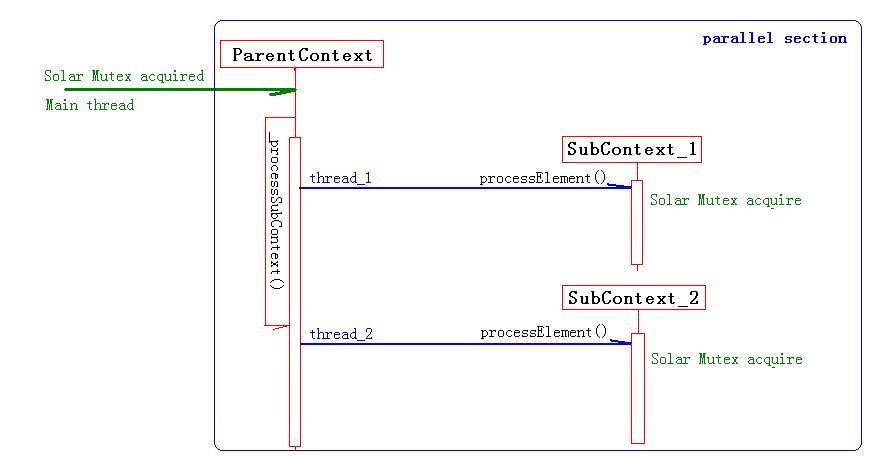Difference between revisions of "Performance/load performance implement parallel mutex"
Zengliangjun (Talk | contribs) |
Zengliangjun (Talk | contribs) ((checkpoint save)) |
||
| Line 26: | Line 26: | ||
| − | + | <source lang="text"> | |
= Solve A plan = | = Solve A plan = | ||
| Line 63: | Line 63: | ||
So 'Parallel Mutex' will be used to synchronization the resource like 'memory' and 'ref count' and 'svarry' etc. at the parallel section . | So 'Parallel Mutex' will be used to synchronization the resource like 'memory' and 'ref count' and 'svarry' etc. at the parallel section . | ||
| − | + | </source> | |
[[Category:Performance]] | [[Category:Performance]] | ||
Revision as of 08:56, 28 May 2010
|
|
|---|
|
Quick Navigation Team Communication Activities |
| About this template |
Please view Performance/load_performance_implement about implement. This document explain parallel and dead lock problem and resolve plan.
Problem
Now I'd finished the part of odf impress's code, and wish is:
settings.xml when processing the <office:settings> element, it's subelement will be parallel processed.
styles.xml when processing the <office:styles> and <office:automatic-styles> and <office:master-styles> elements, it's subelement will be parallel processed.
content.xml when processing the <office:presentation> and styles's elements, it's subelement will be parallel processed.
When running, that will dead lock.
Analysis
We can understand OOo had three type mutex.
- Global Mutex: It can be get from osl::Mutex::getGlobalMutex(), and can be used at a simple critical which lock section no other mutex.
- Solar Mutex: It can be get from Application::GetSolarMutex(), and can be used any where. which lock section can had other mutex, and can be spin lock. It's used at the uno implement class's method section, main function is synchronization UNO environment.
- General Mutex: It can be used other thread and OOo main thread, etc. Which can be as same type.
So, Dead lock will be, It like this:
= Solve A plan = *'''The First:''' So we must let the 'Solar Mutex' will not acquire at parallel section, It is ease. But there will synchronization problem; where the memory, and other error will be there. *'''The Second:''' We must let the 'Solar Mutex' synchronization at parallel section, so there are an other mutex object. So we can design 'Solar Mutex' has two mutex objects, One synchronize at general section and One synchronize at parallel section. How 'Solar Mutex' can know it is general or parallel section; we can register the parallel thread to 'Solar Mutex'. Now It like this: [[Image:Parallel dead lock solve 1.JPG]] Ok, that seem is right, Yes it not wrong. But performance no improve. I think it is that the synchronize section is much block. So the processing is multithread, But all most time only one thread can runing, and other thread is block. So I design the new mutex model, and will test it right or no. = Solve B plan = *'''The First:''' OOo use class 'Guard' to lock section. Can we register the first 'Guard' on mutex object, in the sub section a new 'Guard' can know this mutex had locked. So it will n't call the mutex acquire. When 'Guard' destory it will know it is the register 'Guard' or no, It will release the mutex as true. *'''The Second:''' We will define five type mutex. (1) '''Simple Mutex:''' like the abover description. (2) '''Parallel Mutex:''' It's only used at the parallel section, it will be invalid. (3) '''Global Mutex:''' like OOo now, but when it used at the parallel section, it will used 'Parallel Mutex'. (4) '''Solar Mutex:''' like OOo now, but when it used at the parallel section, it will be invalid. (5) '''General Mutex:''' like OOo now, but when it used at the parallel section, it will used 'Parallel Mutex'. So 'Parallel Mutex' will be used to synchronization the resource like 'memory' and 'ref count' and 'svarry' etc. at the parallel section .
